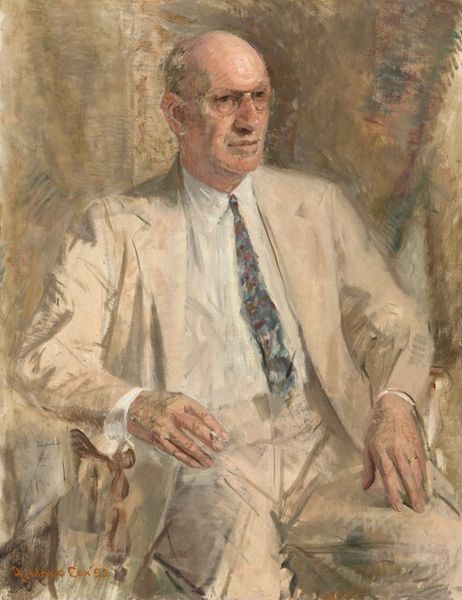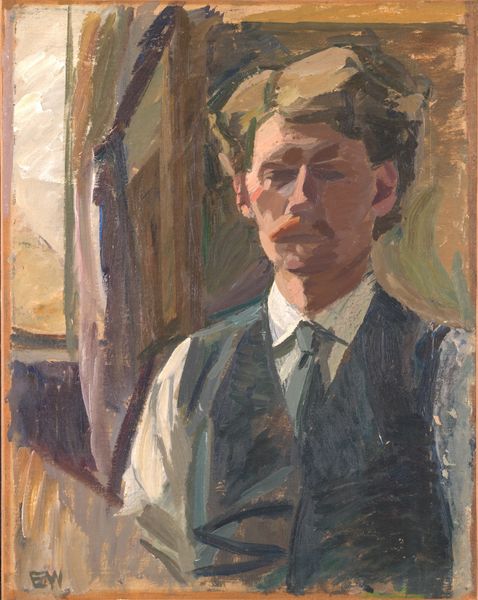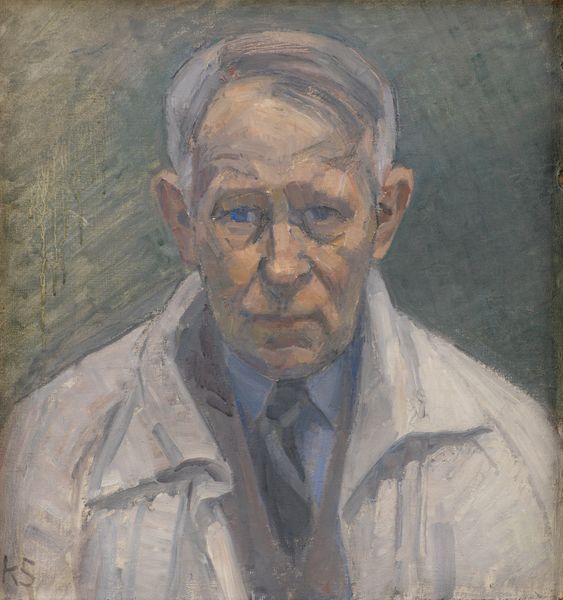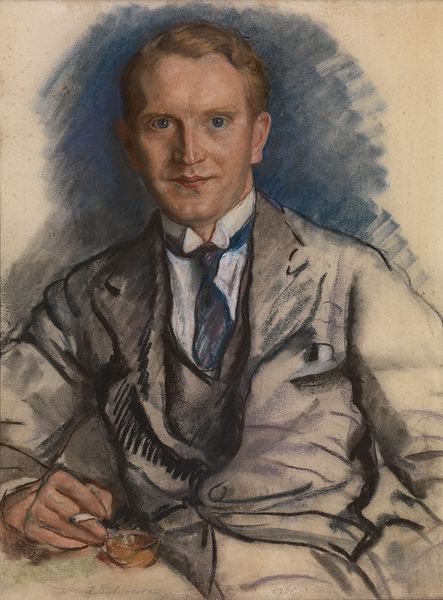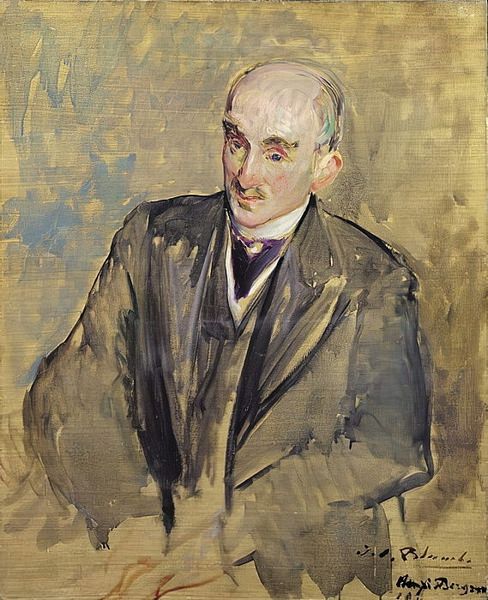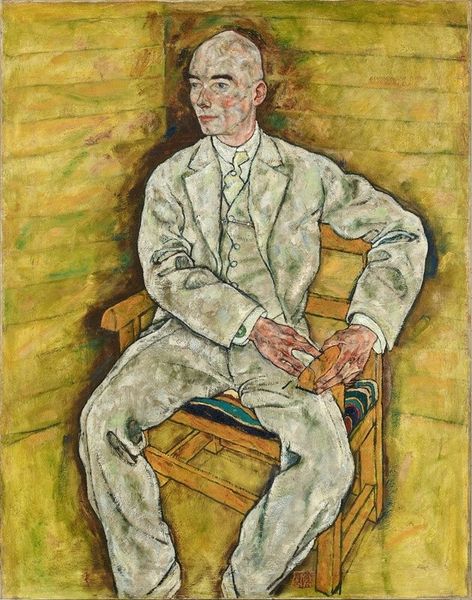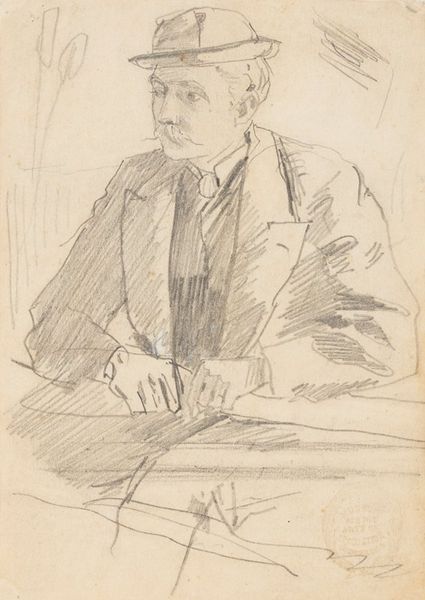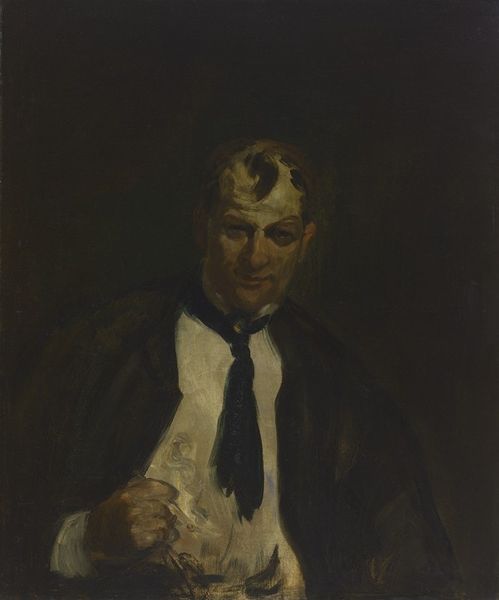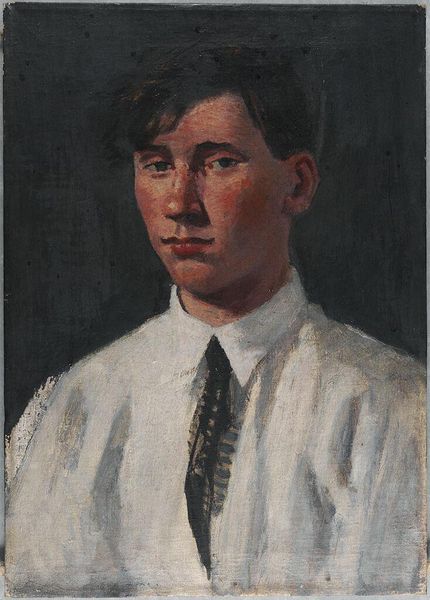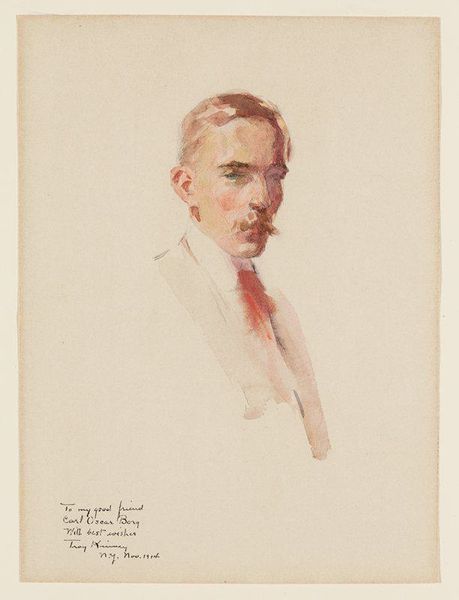
Dimensions: 87 x 61.0 cm
Copyright: Public Domain
Curator: What an interesting face! He looks confident, maybe even a little confrontational. Editor: Indeed. What we have here is "Portrait of the Painter Jakob Nussbaum," an oil on canvas work by Ottilie W. Roederstein, created around 1909, and it's now held at the Städel Museum. There's a subtle dynamism that might stem from the painting being done en plein air. Curator: That makes sense. It feels very immediate, even spontaneous, in its impressionistic brushstrokes. The dominance of white clothing is very striking too – pure and almost theatrical against that muted background. He wields those brushes almost like weapons! Editor: White would definitely signal the supposed 'purity' of artistic creation but it also served practical functions, reflecting the artist’s working class. There's an inherent paradox in this image – Nussbaum, in his bright attire, presents himself in the tradition of the self-assured master painter. Curator: It almost has an otherworldly quality! Look at the brushwork in the face—Roederstein isn't simply depicting a likeness; she's hinting at something deeper. Maybe it's how he saw himself? Artists have always used portraits to mythologize themselves, after all. The palette too--held firmly with green swatches...suggestive of promise, newness. Editor: Precisely. The palette acts almost like an extension of himself and suggests the artistic class Nussbaum wanted to belong to at the time, at the turn of the century, and as for the gaze, it challenges us as viewers. Who were his influences, one wonders, to so project an artist persona? This question perhaps contextualizes our response. Curator: So, we are both caught in this gaze? Entranced in our own way by how Nussbaum sought to be perceived? Editor: That is so. It is difficult, ultimately, not to contemplate what 'the artist' looked and stood for in Roederstein's time. Curator: It leaves one reflecting not only on a man and his artistic expression but on the perpetual dance between identity, representation, and legacy. Thank you for this deeper reading!
Comments
stadelmuseum about 2 years ago
⋮
The portrait shows Ottilie W. Roederstein’s friend and colleague Jakob Nussbaum. The brush and his palette clearly identify him as a painter. The painting is characterised by free brushwork and bright colours. In the same year, Nussbaum produced a portrait of Roederstein, in which he captured her life-size in a summer landscape; this work is also in the collection of the museum (Inv. SG 243). Roederstein and Nussbaum were active together in the Frankfurt-Cronberg artists’ association, which was influenced by painting en plain air as the French Impressionists did. They aimed at promoting it in Germany as well. This influence can be clearly felt in Roederstein’s portrait of Nussbaum. At the same time, it marks the zenith and end of her Impressionist phase, as, a short time later, the artists’ association dissolved and Roederstein adopted a more objective, two-dimensional, linear style.
Join the conversation
Join millions of artists and users on Artera today and experience the ultimate creative platform.
